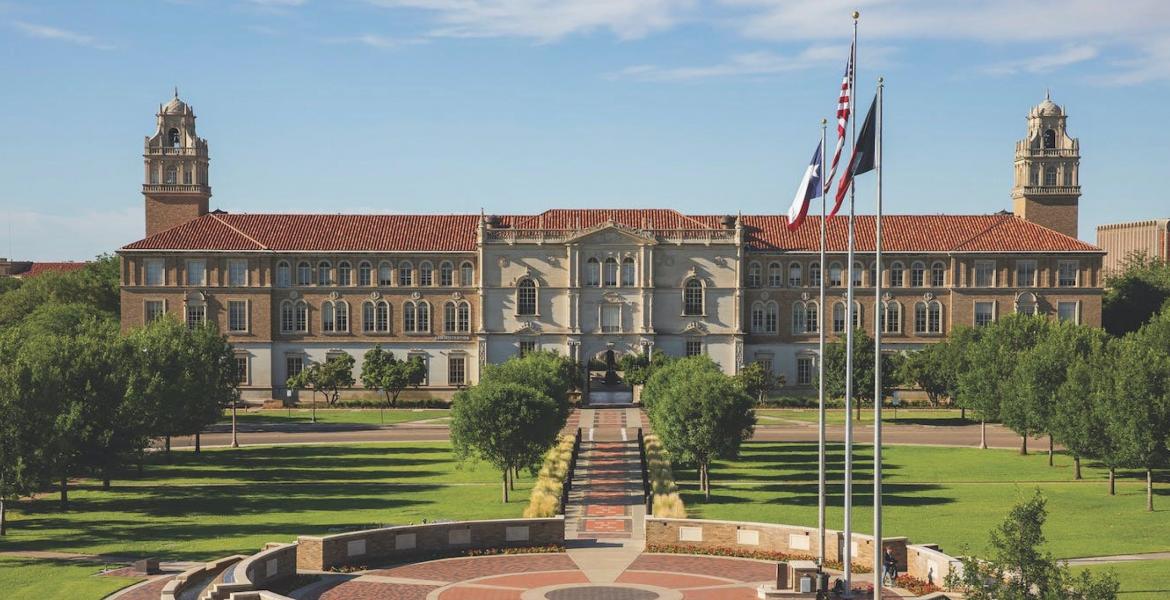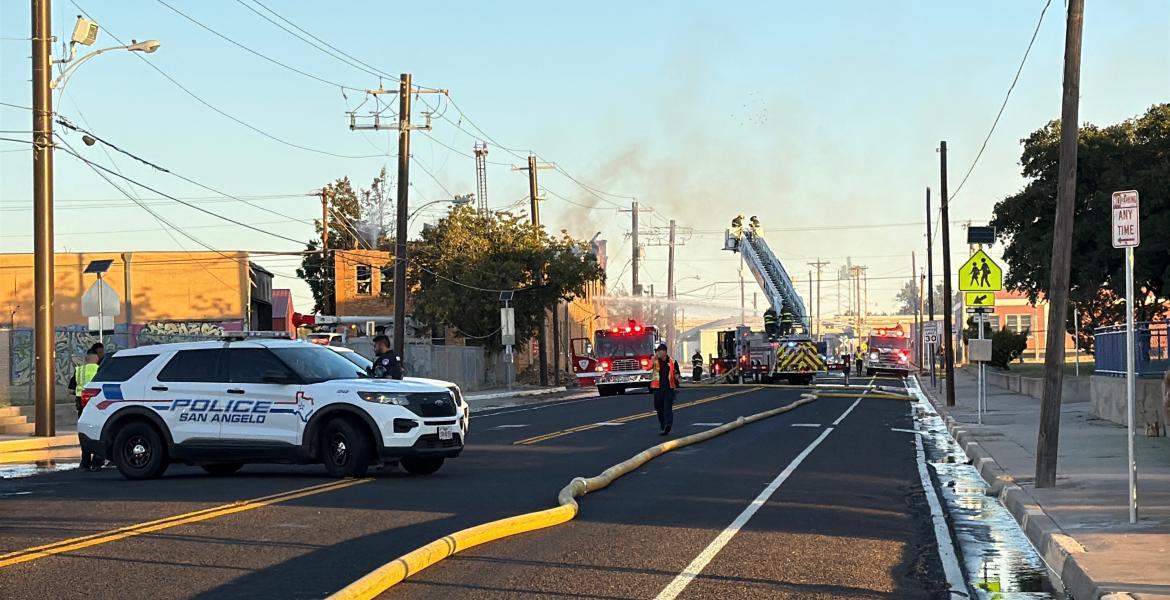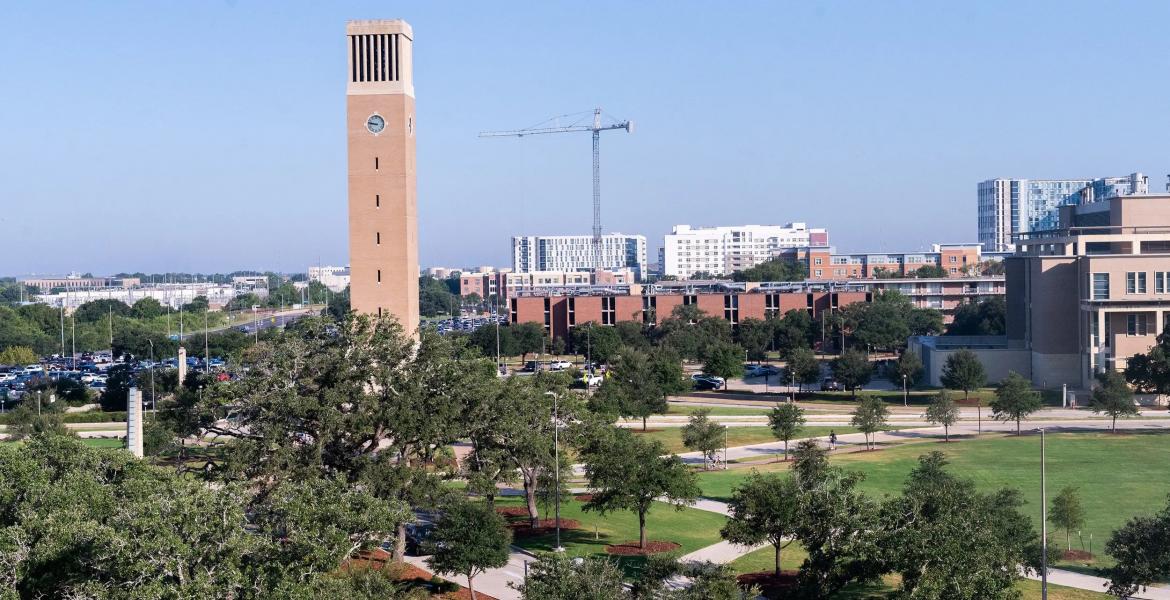Angelo State University is embarking on $31 million in new construction projects for the 2017 fiscal year starting in June, ASU President Brian May said.
May spoke at the San Angelo Rotary Club Friday at noon.
Groundbreaking for the construction of The Angelo State University Archer College of Health and Human Services will happen later this year. The $26 million, 52,000-square-foot facility will be constructed next to the Vincent Building that houses the Planetarium.
The Archer Foundation seeded the project with a $5 million gift, and the Texas Legislature funded the balance, May said.
[[{"fid":"19416","view_mode":"preview","type":"media","attributes":{"alt":"Location of The Angelo State University Archer College of Health and Human Services. (TTU System graphic)","title":"Location of The Angelo State University Archer College of Health and Human Services. (TTU System graphic)","height":"740","width":"1200","class":"media-element file-preview imgbody"}}]]Above: Location of The Angelo State University Archer College of Health and Human Services. (TTU System graphic)
Next to that building, ASU will build brand new engineering labs. The labs will be named after San Angelo citizen Hunter Strain. May said an anonymous donor gave $4.5 million to build the labs and asked they be named after his good friend. It has a June 2016 construction start date.
“If we can get the Texas Legislature to continue to fund our growth, we’ll be okay,” May said.
Also in the works is a $3 million upgrade to the press box at the LeGrand Stadium where the ASU Rams play football.
[[{"fid":"19417","view_mode":"preview","type":"media","attributes":{"alt":"The new $3 million press box at LeGrand Stadium on the ASU campus. (TTU System graphic)","title":"The new $3 million press box at LeGrand Stadium on the ASU campus. (TTU System graphic)","height":"554","width":"1200","class":"media-element file-preview imgbody"}}]]
Above: The new $3 million press box at LeGrand Stadium on the ASU campus. (TTU System graphic)
ASU has experienced great things since moving to the Texas Tech University System, May said. All of the systems, including The University of Texas System and the Texas A&M University System, have great attributes, but Tech has Chancellor Robert Duncan who is a particular strength, May noted.
Duncan, who rose to prominence as a Republican in the Texas Senate representing this region, was known as a pragmatic problem solver and someone who worked both sides of the aisle to accomplish goals. He has carried that talent, and his Rolodex of contacts, into his role as TTU System Chancellor.
“I don’t really need to go down to Austin any more,” President May admitted. Duncan has Angelo State’s back, he said.
Facilities expansion is needed because of ASU’s continued rapid growth in enrollment. Nine years ago, total enrollment consisted of 7,000 students. By the fall of 2015, that number had increased by 20 percent, to 8,500.
“In the fall of 2016, we will have a total enrollment of over 9,000,” May said.
Much of the growth is due to ASU’s recently launched Dual Credit program—offering college credit to high school students.
“It’s much more common now,” May said. In part, it is because of the skyrocketing cost of obtaining a college education. Not only do parents benefit financially, but the State of Texas also saves money when college students graduate earlier, May said.
May offered as an example Roscoe Collegiate Independent School District’s Superintendent Kim Alexander. May said that of Alexander’s 2015 graduation class, 97 percent graduated with an associate’s degree in college – 60 hours of college coursework completed. May added that he is proud that Alexander holds a degree from ASU.
“That is the future,” May said. “There is a divergence of opinion of whether or not an 18 year old is ready to show up on campus as a college junior.”
However, more and more, high schools will offer dual credit. Somewhere around 15-20 hours is the average, he said.
“It could be that, soon, all high school students will graduate (from high school) with a two-year degree. And they’ll come to a four-year institution as a junior,” May said.
“Imagine how much cost that will save the State of Texas. But is it the same quality?” May asked.
By monitoring, assessing successes and failures, and adjusting programs, May believes the high school dual-credit programs can become a success story, much like how online courses have become a staple of how most universities are delivering degrees over the past 15 years.
There are 1,800 dual credit students at ASU today.
Helping students pay for college without accumulating a large student loan debt or crippling parents’ finances is an urgent need for the college administration community. ASU is doing its part, May said.
“The fastest way to eliminate or minimize that debt is to get them out quicker,” May said.
May said that ASU adopted a slogan about four years ago—“15 is the new 12” (credit hours per semester). Also, at ASU, a student must commit to 15 hours each semester to keep his or her scholarship.
“I was part of that culture that put a glass ceiling on students,” May said. He admitted that in the past he would use 12 hours per semester as a benchmark. Today, particularly with the cost of housing, 12 hours is a low water mark to graduate on time, or better, early.
Also, if you take a full load of hours during the summer, you get free housing at ASU. It helps fund the faculty during the summer months, but, more importantly, it helps students finish school sooner, reducing college costs, he said.
Living expenses are where the debt comes from, May said.
“You can buy a car with the loans students are offered,” he said. And he said he always tells students, “Don’t take that money! It’s not free.”
May also attributed ASU’s growth to the new College of Engineering.
“I thought we might have 20 students in Civil Engineering, but we had 67 this year and will have over 100 in the fall,” May said.
Engineering took ASU to a new level, and May believes it will be a staple of ASU academic offerings, much like nursing, physical therapy, agriculture, and teaching have traditionally been.
In the world of cultivating gifts to the university, May said that $45 million was recently raised from the private sector. Much of the money has gone to endowed chairs, which is uncommon for a school of ASU’s size, he said. The money is also funding specialized equipment, new facilities, and new programs.
Carr Scholarships exclusive to ASU students are a great recruitment and retention program. The scholarships, amounting to $1,500 to $18,000 per year, help about 25 percent of all ASU students pay for college. The Carr Foundation income exceeds 3-3.5 percent, but it’s lower than the 7-8 percent the endowment enjoyed less than five years ago, May said. The challenge of the ability to give out more scholarships is the depressed interest rates globally. Carr Scholarships cannot be derived from the principle of the $133 million endowment, only money earned off of that principle. The Carr Foundation also makes money off oil and gas. The $30 per barrel oil prices are not helping, he said.
Athletics are doing very well with great coaches in place, May added. “Last year, we were in the NCAA playoffs in just about every sport.”
Athletics are not a university’s most important mission; academics are, he said. “But athletics are your front door. It absolutely gets more exposure for ASU than everything else put together.”
May credits the athletic success with the record increase in freshman enrollment.
“Kids in high school are impressionable. They want to be associated with a winner, and this kind of exposure really does help,” he said. Excluding dual credit students, freshman enrollment is up 19 percent this year.
Subscribe to the LIVE! Daily
Required






Post a comment to this article here: